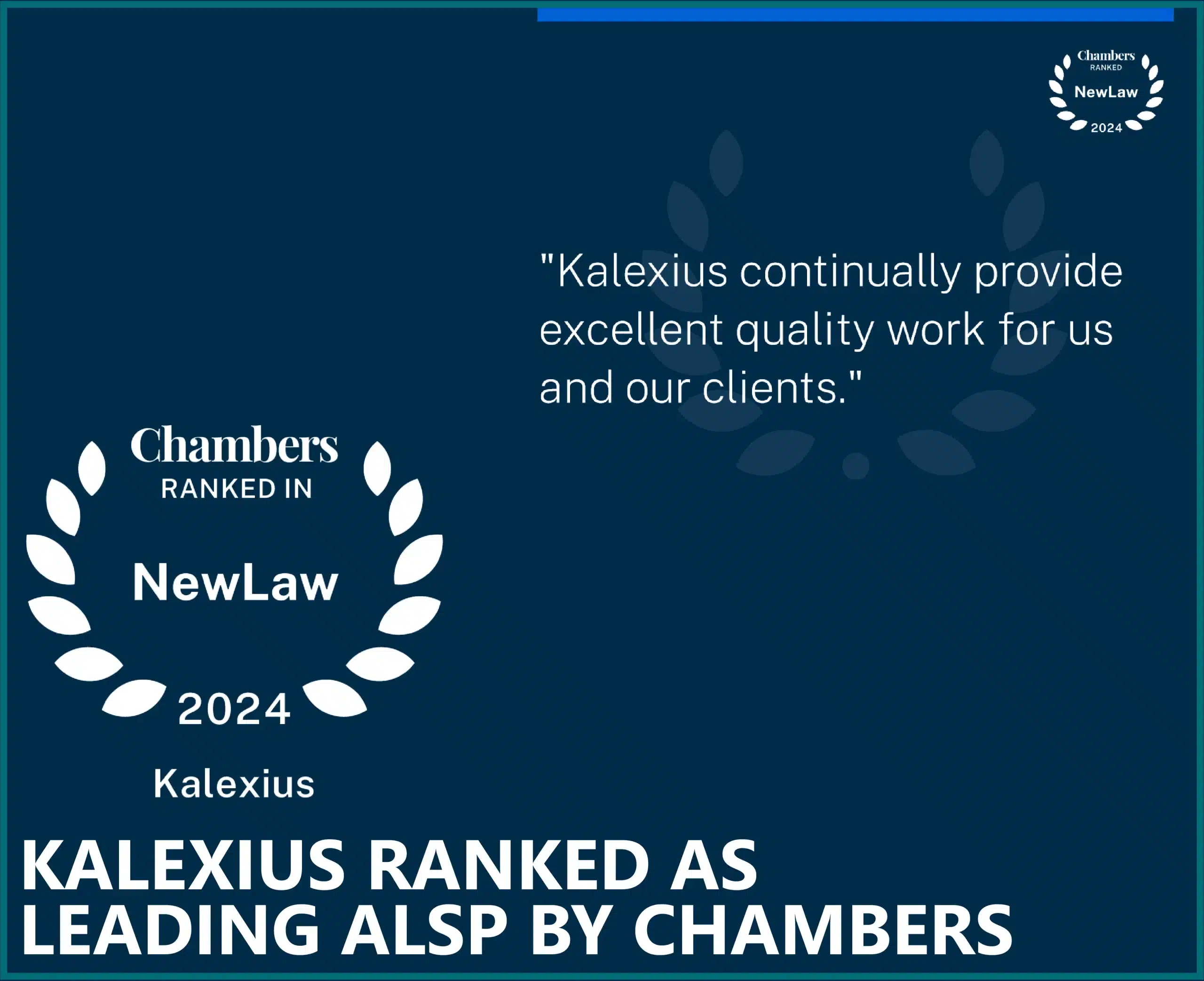
We need to discuss legal tech.
But first, picture a high-end leather shoe workshop in the rolling hills of Tuscany, a world away from legal tech. A team of artisan shoemakers works under the supervision of the head shoemaker. The workshop has no production planning, no procurement specialists, no R&D department, just a clerk to handle billing.
Each shoemaker works alone or in small teams, starting from scratch for each design, buying materials from their preferred vendors and sometimes struggling to get access to the production line when all the other teams need it at the same time.
It’s been that way for centuries; making high quality leather shoes is an art mastered by the select few and clients are willing to pay good money for a great pair of shoes.
There is no reason for the artisans to try to make the production process more efficient to save money; introducing new technology would jeopardize the integrity and the quality of the product.
Sounds familiar?
If you are a lawyer, you can probably relate to at least some of the above in the way a law firm or a legal department traditionally works. If you are lucky, your firm/team has already acknowledged that something needs to change and is looking for solutions.
So why should anything change? After all, legal work is hardly something you produce in a factory. Each legal problem is unique and requires careful analysis by a legal expert. The solution to two legal problems, even similar, is never the same. It seems like legal work is just too complex to streamline.
That is partly true. There is a fraction of legal work that cannot be molded in any way into an automatized process.
That doesn’t mean that nothing should be done to make delivery of legal work more efficient.
Some legal work IS simple enough to automate. All legal work can benefit from optimization.
#1 - Some legal work can be automated
Two ingredients are necessary to automate a task:
- The task must be time-consuming enough to require automation. It can be a one-minute task performed hundreds of times, or an occasional large task taking several hours.
- Each occurrence of the task must occur in a similar manner.
When you think of automation, you may think of robots, artificial intelligence and fancy legal tech applications – but automation doesn’t necessarily involve any of it! It can be applied to the most mundane of tasks and in fact, that’s where it is easiest to implement and where you can reap rewards quickly with minimal investment. This list represents the whole spectrum, in order of task complexity / legal thinking involved.
1 - Recurring tasks
We set up recurring tasks on our task management platform for all repeating work and events. Here are 2 examples:
- Our IP teams use recurring tasks for domain name monitoring. A task pops up whenever it’s time to check the status of contentious domain names, and contains the process and information required to perform the check.
- Everyone at Kalexius uses recurring tasks for regular meetings. A task will appear a couple days before with an agenda template. The task is already shared with the meeting participants. All that’s left to do is fill in the agenda and the meeting prep is done.
If you don’t have a task management platform, you can set these up in your e-mail. However, task managers are so much better and there are many free versions out there. We use Wrike, and they have a free version available.
Time saved: 1-5 minutes per task
2 - Project templates
Our Corporate department handles regular corporate housekeeping work. They use a quick project template for the most common operations such as incorporating a company and drafting annual board meeting paperwork. Every time a team member starts a new incorporation assignment, they duplicate the template (available on our task management platform, but you could also just have a Word checklist), generating a to-do list of all the necessary steps to incorporate a company, with the necessary variables.
Time saved: 5-10 minutes per project
3 - Mailing campaigns
Our Banking & Finance department manages repapering projects – a series of contract renegotiation on behalf of a client usually triggered by a regulatory change.
The number of agreements to renegotiate can range from hundreds to thousands.
To kick off the project, we will send an e-mail to all counterparties, inviting them to start negotiations. From there, we will regularly chase the unresponsive counterparties, track e-mails that bounce back because the e-mail address no longer exists, etc…
We use an e-mailing tool that manages the steps where a lawyer will have no added value, such as sending chasing e-mails at regular intervals.
An inexpensive cloud-based e-mail tracking software is SimplyCast.
Time saved: 5-10 seconds per e-mail
4 - Contract negotiation software
At the core of legal tech, contract negotiation software helps lawyers identify unacceptable/incorrect wording in counterparty drafts and suggests a redline according to the company’s preferred position as per their negotiation guidelines.

This is how it works:
- First, identify the contract type that can benefit from automated review. The contracts need to follow a similar format and you need enough volume (at the very minimum, 50 contracts per year) for the investment to be worthwhile. Contracts that follow an industry template are great candidates.
- Then, set up your negotiation guidelines in the software. Depending on the software, you can configure this manually, or upload a series of legacy contracts with redline in the tool which will figure out the guidelines. Some software allows a mix of both to set up the guidelines.
- Lastly, upload a new contract on the software. It will flag any language inconsistent with your guidelines and suggest a new wording for the contentious language. The most sophisticated tools will be able to redline the whole contract, and the lawyer will simply review the suggested redline and amend if required.
We like DocJuris and Clearlaw. Please note that we are not affiliated to any legal tech software provider and these are our personal recommendations.
Time saved: Up to an hour per contract
5 - Self-service legal guidance
“Hi Legal Mark, this is HR Jane. I’m finalizing a job offer which includes a non-compete clause covering the US as per our policy but I’m not sure about the maximum applicable duration.”
“Sure thing, I’d need to know whether this is a junior or senior position though.”
“It’s a senior hire.”
“In that case, the guideline we have set is 1 year maximum.”
Self-service legal guidance can save precious time for very simple legal questions that can be answered through a decision tree.
The decision tree is configured in a software such as Neota Logic and users access it through a chat bot or a questionnaire form.
In the scenario above, Jane could have filled in a short questionnaire and received the following answer: “The current group guideline for non-compete clause duration in your situation is 1 year maximum. Please contact legal if you have the need to apply a longer duration or have any questions or doubts as to your specific scenario”.
This solution, just like automated contract negotiation, requires enough volume to make sense. Building decision trees is possible only for straightforward legal questions. This usually works best in a structured legal environment where the different legal positions taken by in-house counsel have matured into group guidelines that the lawyers themselves apply. This doesn’t require complex legal tech, it is simply taking the next step – instead of the lawyer applying the same formula over and over again, the machine applies it, saving time for both the lawyer and the user.
Time saved: 2-10 minutes per request
#2 - All legal work can be optimized
“Optimizing” in the context of legal work means doing it faster, at a lesser cost and with a higher quality. This can seem a bit overwhelming – where to start? Should you look at your processes? Make sure you have the right resource for each task? Implement legal tech to analyze outside counsel cost?
Luckily, the Legal Operations position has emerged with the purpose of doing just that. Legal Ops professionals usually have a strong legal background and the skills to understand legal work, identify what can be optimized and how to do it. Don’t have a Legal Ops in your team? You can always outsource it, plenty of providers offer Legal Ops consulting.


